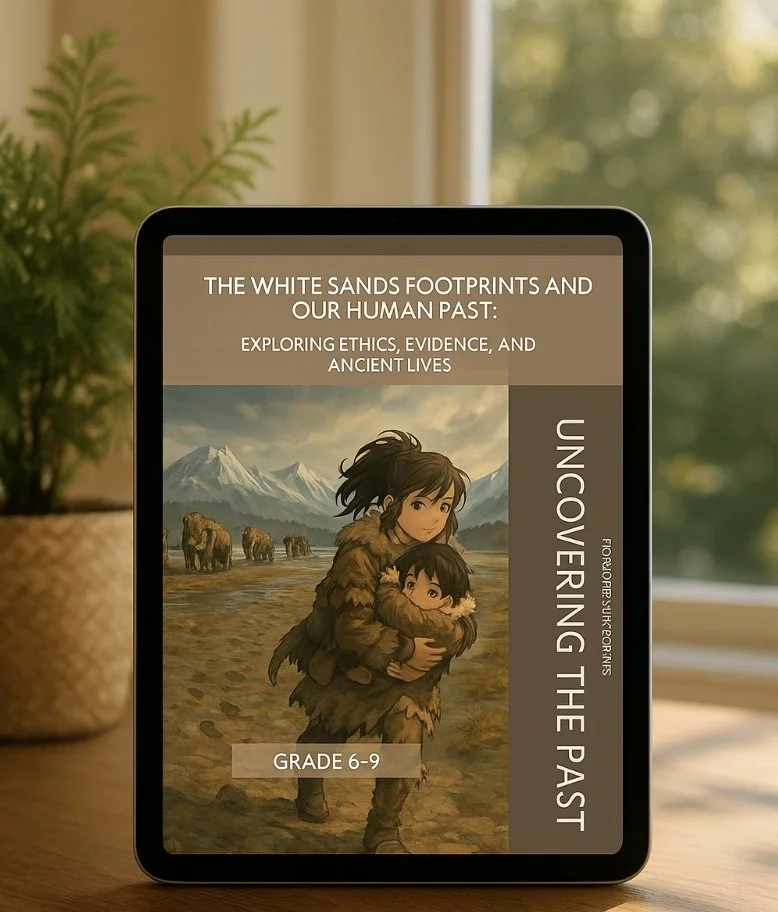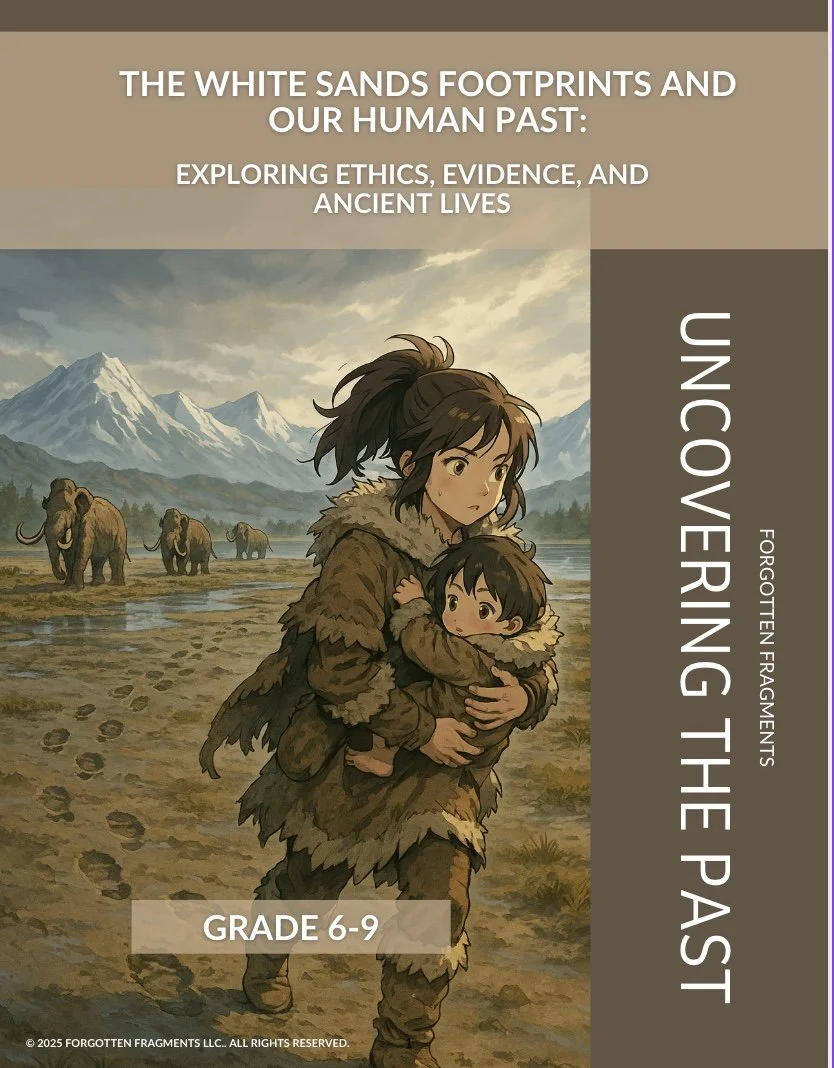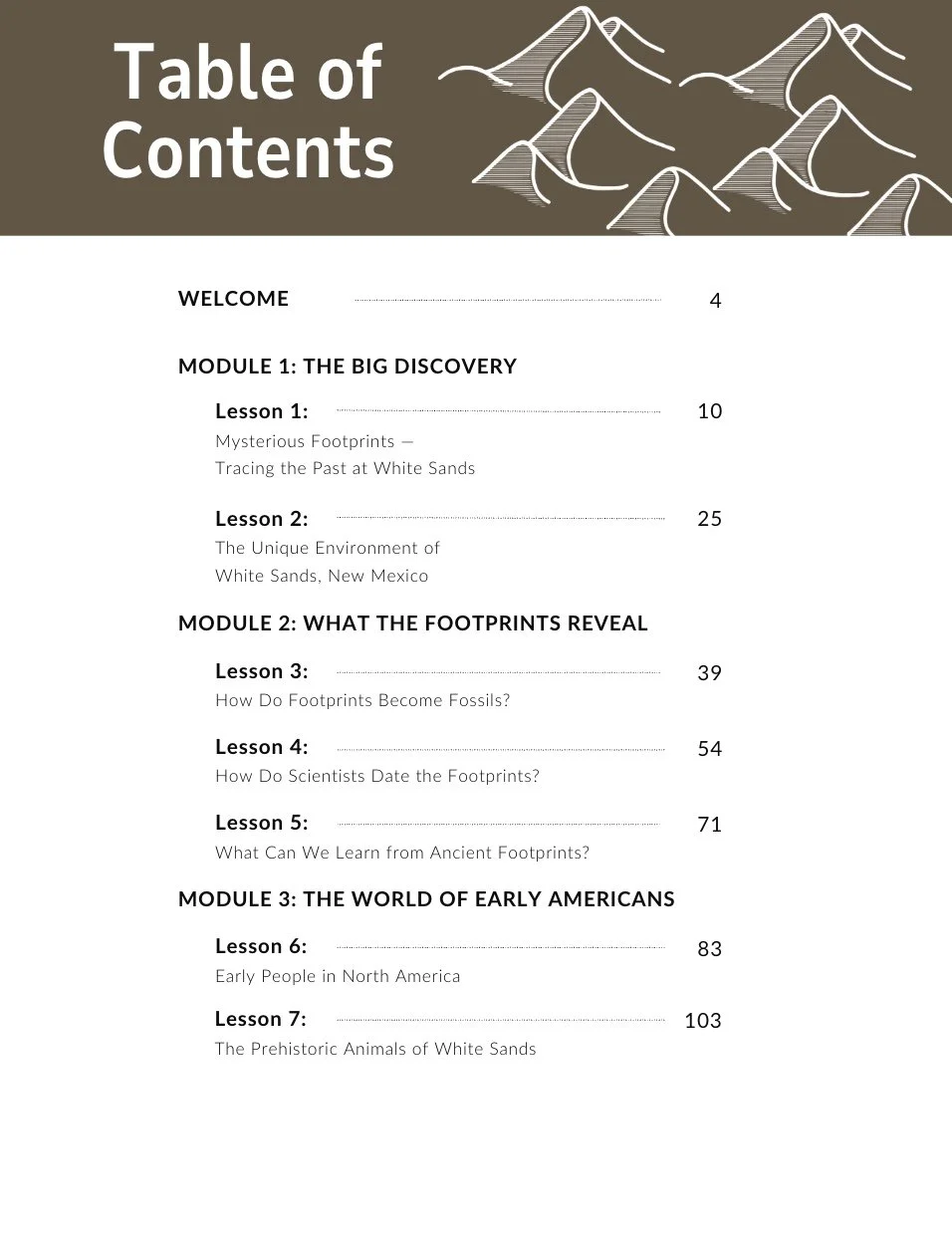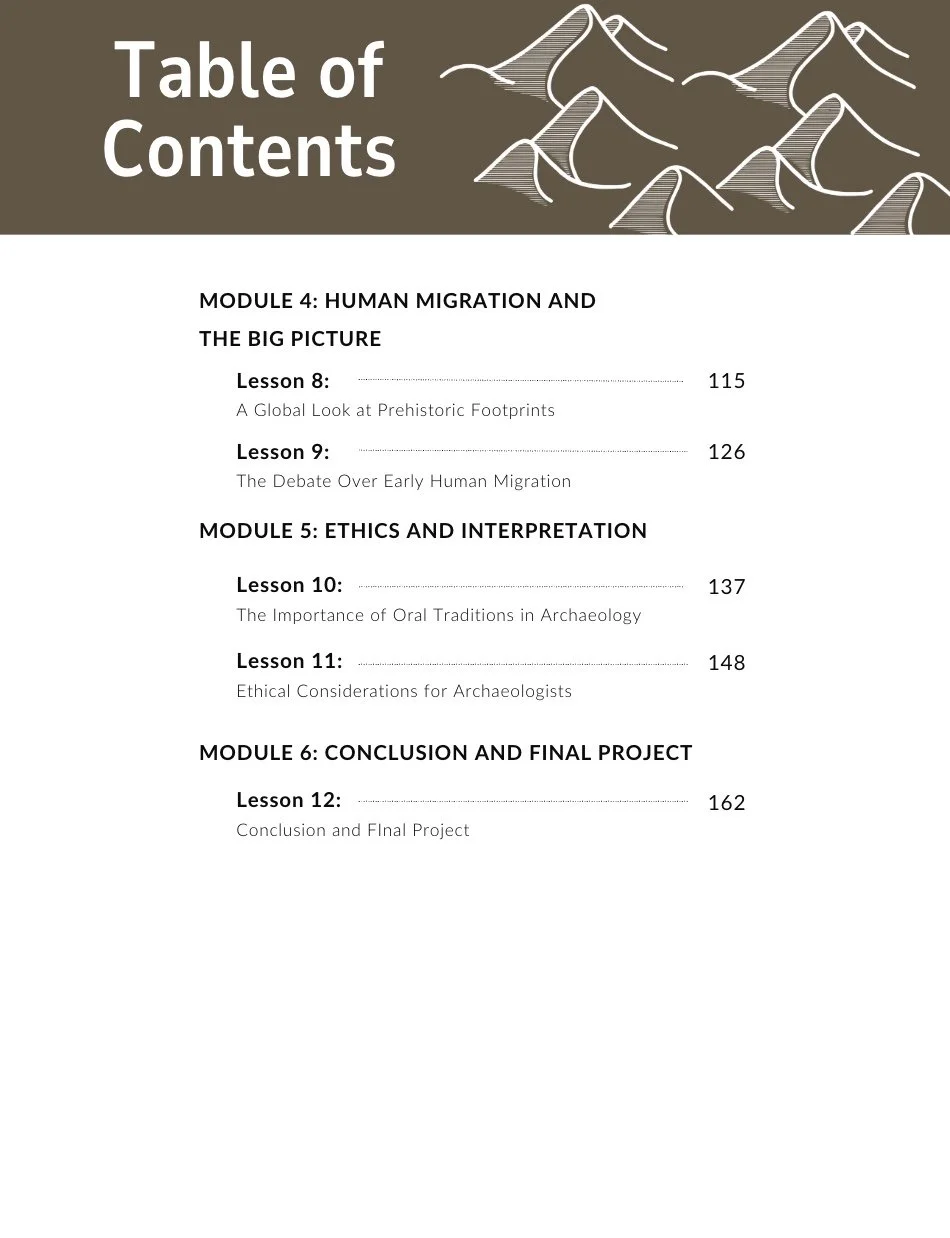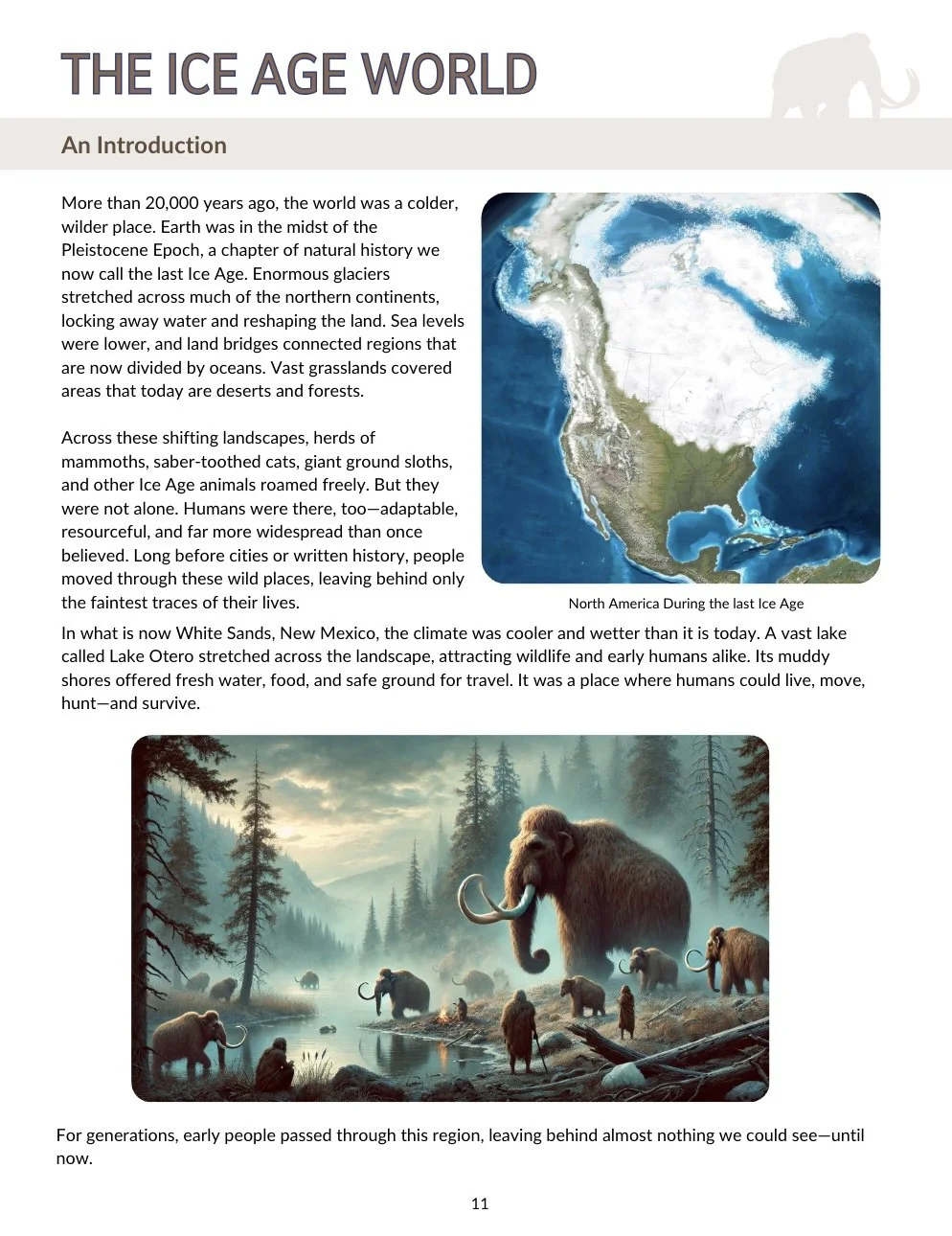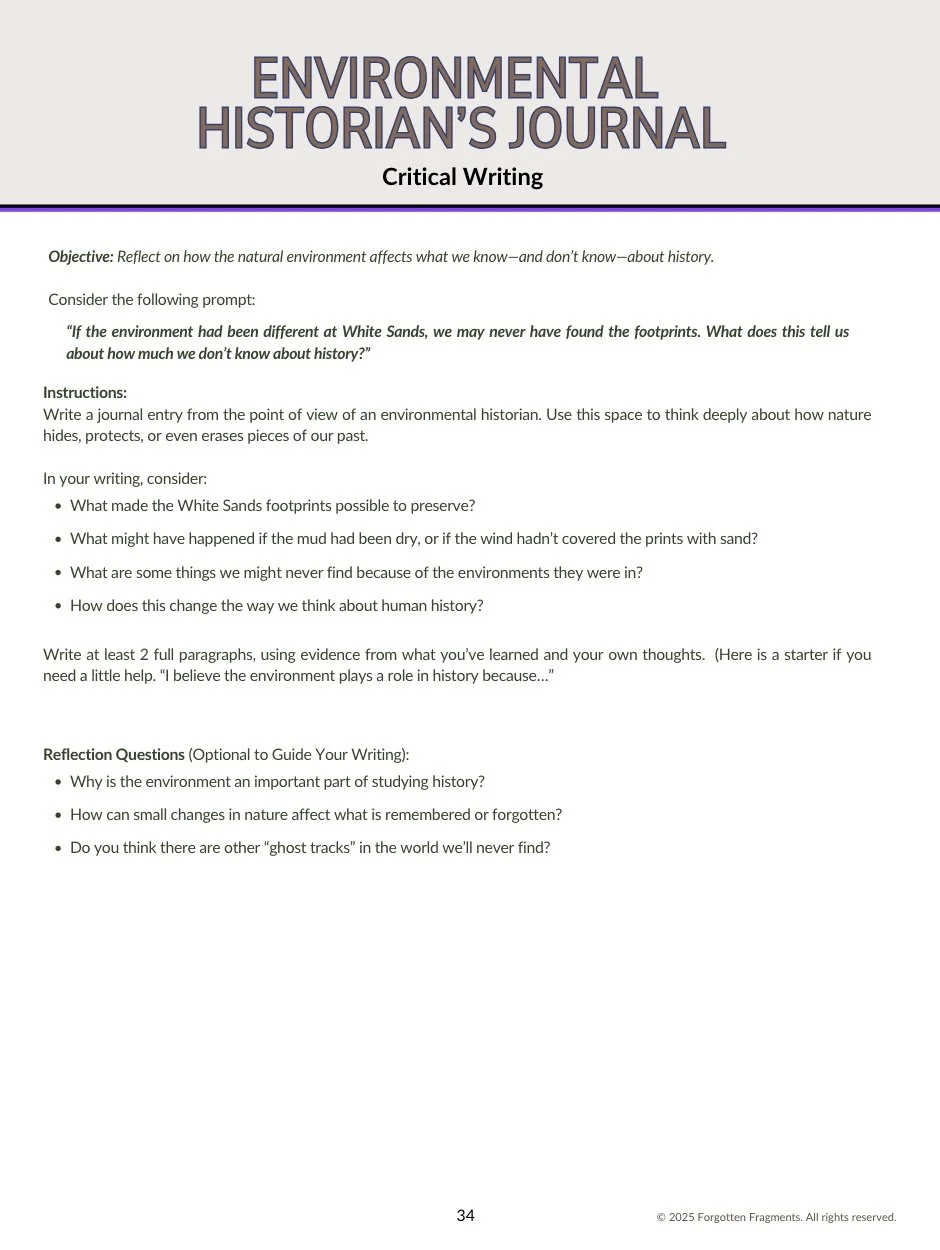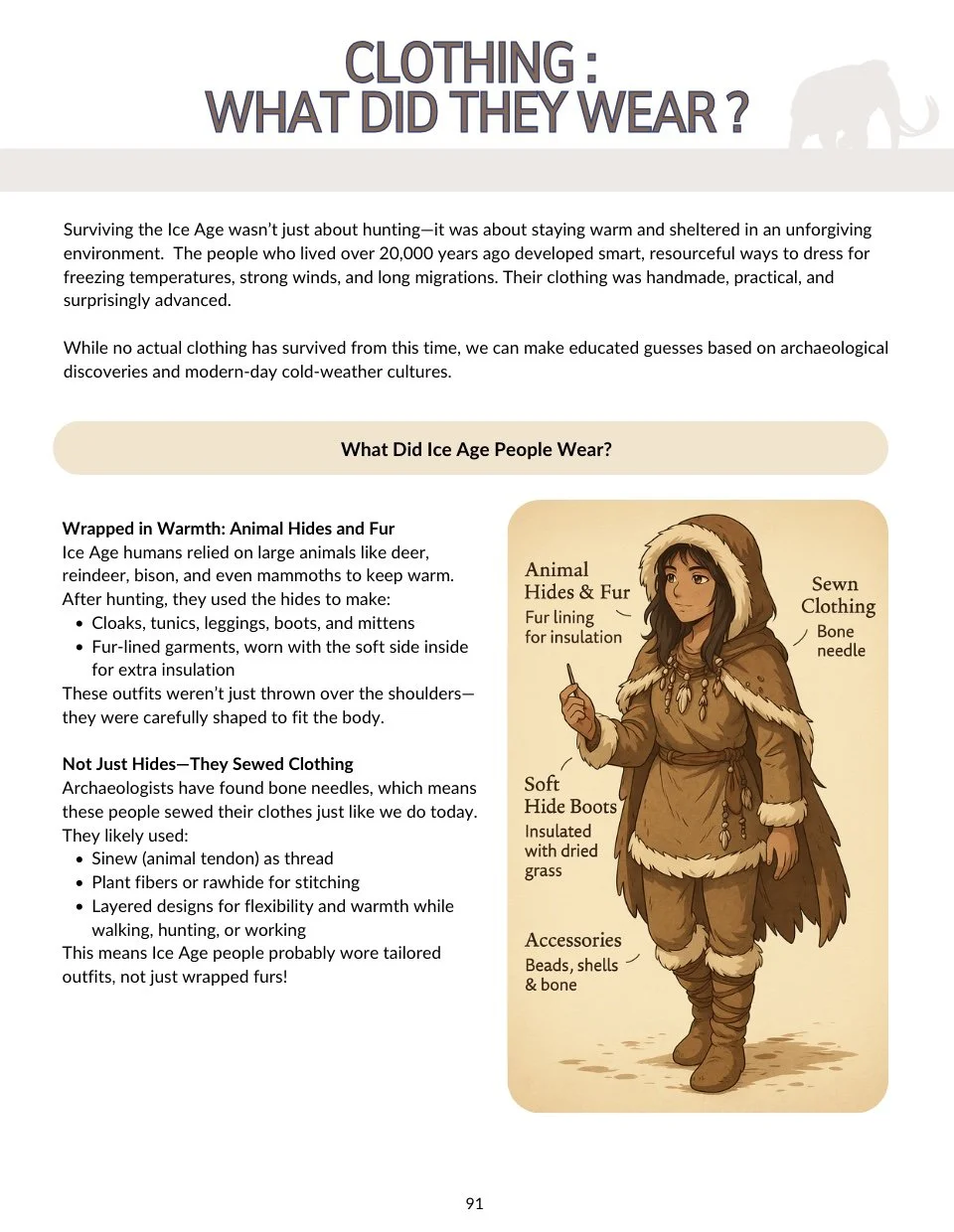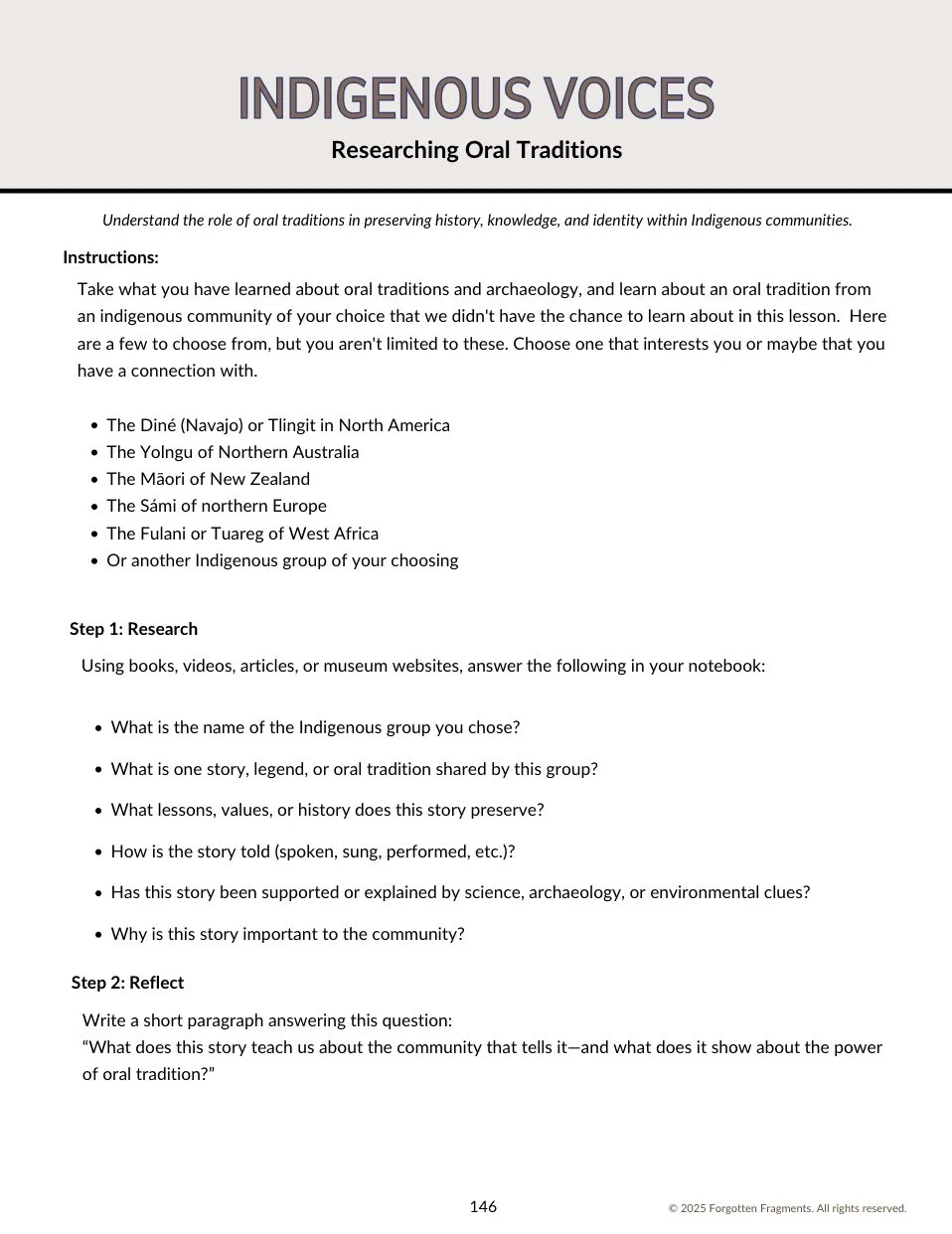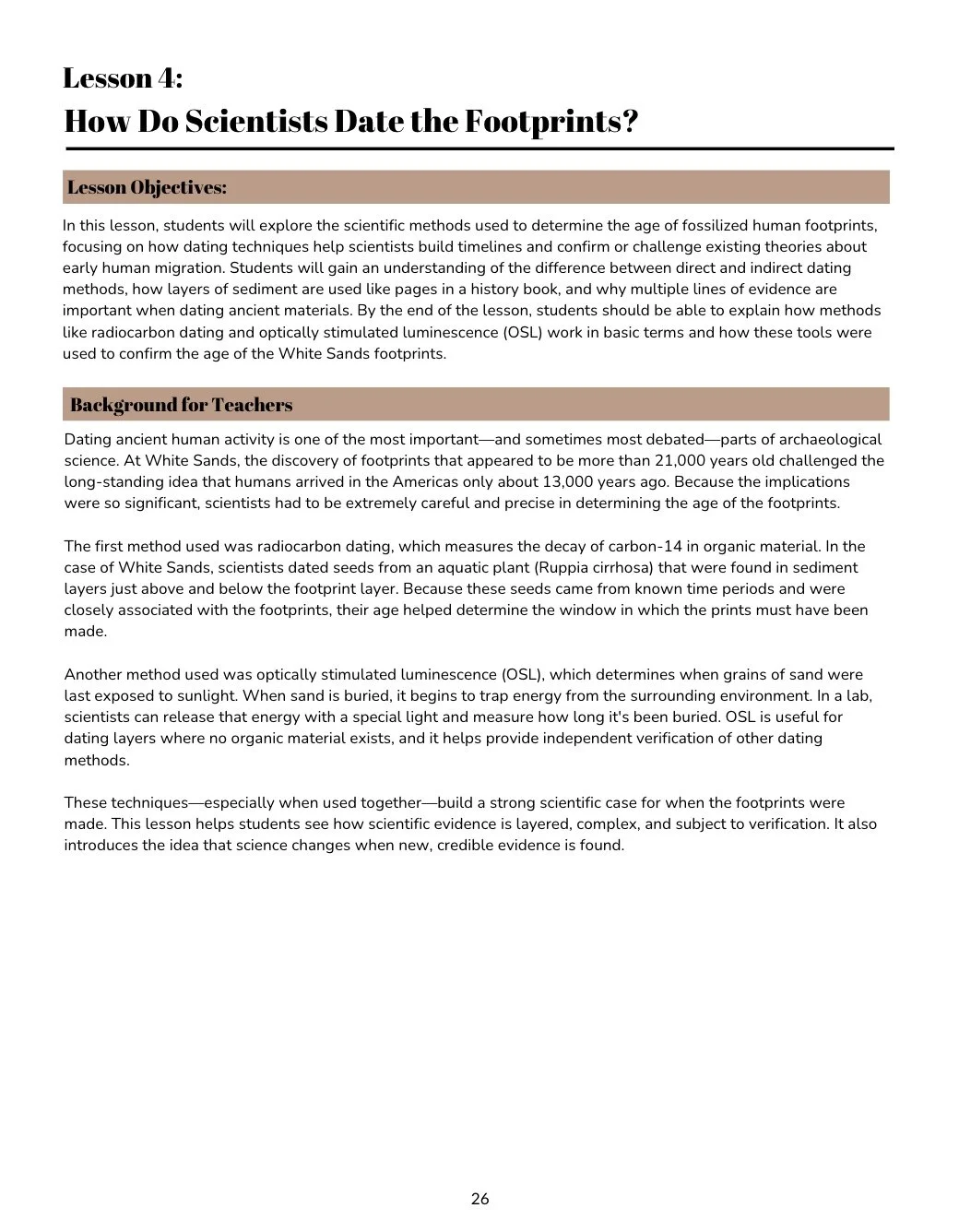Uncover the Story of America’s Oldest Footprints.
A ready-to-use, discovery-based homeschool curriculum exploring Ice Age footprints, ancient humans, and groundbreaking science.
The White Sands Footprints and Our Human Past:
Exploring Ethics, Evidence, and Ancient Lives
Step into the distant past and walk in the footprints of Ice Age humans. This 12-lesson unit study explores one of the most groundbreaking discoveries in American archaeology—the fossilized human footprints at White Sands National Park. Perfect for middle and high school homeschoolers, this immersive curriculum combines critical thinking, ethics, geography, ancient history, and science—all through the lens of a real archaeological mystery.
Key Features:
12 engaging, self-guided lessons (student & teacher guides included)
Over 175 full-color pages + optional black-and-white printable activity sheets
Hands-on activities, writing prompts, maps, and discussion questions
Emphasis on critical thinking and evidence-based reasoning
Introduces archaeology, Ice Age environments, migration theories, and Indigenous perspectives
Get the Complete Curriculum Bundle
Only $30
Instant digital download – no shipping required
—————————— What You’ll Get ——————————
Student Guide
A self-guided, digital workbook designed for curious learners aged 10 and up. This guide combines history, science, storytelling, and ethics into one immersive learning experience. Students work independently through:
Engaging Readings that read like a story—exploring Ice Age life, ancient migration, fossil footprints, and ethical dilemmas in archaeology.
Creative Writing Prompts that build empathy and imagination (“Write from the perspective of an Ice Age child…”).
Hands-On Experiments like simulating fossil formation and testing different sands for footprint preservation.
Critical Thinking Activities that challenge assumptions about early humans and migration theories.
Visual Projects including maps, timelines, and fossil flipbooks.
Reflection Journals & Open-Ended Questions to foster deep thinking and discussion.
No lectures or additional materials are required—students can complete the entire unit at their own pace.
Teacher’s Guide
For parents or educators who want extra support. This guide includes:
Lesson Objectives & Background Information to quickly get you up to speed on the topic.
Suggested Responses & Discussion Guidance for open-ended questions.
Answer Keys for factual activities, worksheets, and charts.
Even if you're not a history buff or science expert, this guide helps you feel confident supporting your student’s learning.
Printable Activity Pages
Printer-friendly versions of the student activity pages. Ideal for those who prefer hands-on work in notebooks or want to reduce printing costs. These include:
All worksheets from the unit
No images or backgrounds—easy on ink and clear to use
This makes the unit flexible for screen-free or portfolio-based homeschoolers.
—————————— What To Expect ——————————
From Day 1, your student will dive into a mystery 23,000 years in the making.
They’ll begin by imagining the journey of an Ice Age woman and the child she carried—then transition into understanding the science behind fossilization, how archaeologists date footprints, and what we can (and can’t) know about ancient people.
Over the course of this unit, learners will:
Follow the real-life discovery of the White Sands fossil footprints and analyze what they tell us
Explore big questions like:
Who were the first Americans?
How do stories and science shape our understanding of the past?
What responsibilities do we have when studying ancient human remains?
Reconstruct ancient environments and trace the paths of Ice Age animals and humans
Compare scientific and Indigenous perspectives through oral traditions and ethical inquiry
Create their own interpretations of history through writing, mapping, debating, and lab work
This is not just a history unit.
It’s a cross-disciplinary exploration of evidence, imagination, ethics, and wonder.
By the end of the unit, students will not only have learned new facts—they’ll have practiced the skills of a historian, asked hard questions, and connected deeply with the human past.
Still Not Sure?
Try a sample lesson before you commit.
Frequently Asked Question
-
How archaeologists study footprints and what they reveal
The science of fossil formation and dating methods
Theories of human migration to the Americas
Ice Age geography, animals, and climate
Ethical debates over studying ancient human remains
Indigenous perspectives on history and land
-
This unit is ideal for:
Grades 7th - 10th (can be used for both younger and older students as well with some minor adjustments
Independent learners or co-learning with parents
Homeschoolers seeking a unique blend of science and history
Families wanting culturally sensitive, curiosity-driven curriculum
Also adaptable for classroom, co-op, or hybrid school settings.
-
Historical Thinking – Understanding how evidence shapes the past
Scientific Inquiry – Modeling fossilization and analyzing dating methods
Ethical Reasoning – Debating archaeological questions with real-world impact
Creative Expression – Telling stories through writing, mapping, and visuals
Independent Learning – Self-paced, flexible, and thought-provoking
-
Not at all! The curriculum is designed to work digitally, with printable pages included for those who prefer offline work.

